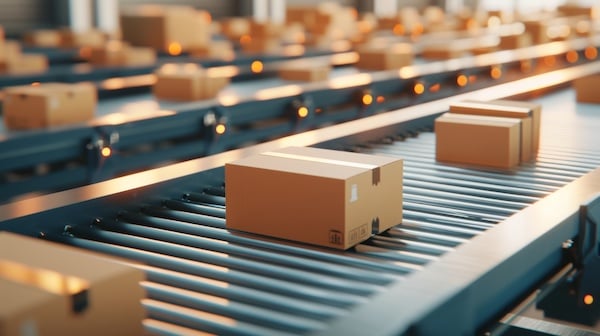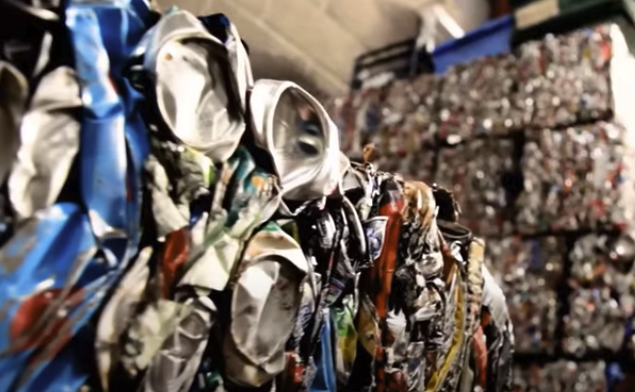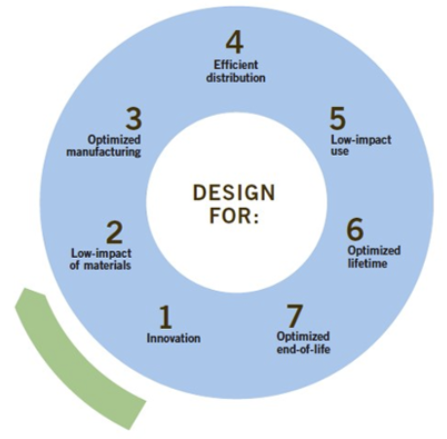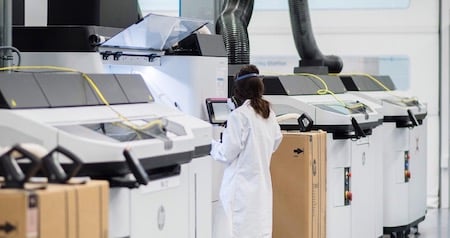
The consumer packaged goods (CPG) industry is witnessing a growing demand for eco-friendly packaging solutions. Meeting demand is not a simple matter of replacing non-recyclable plastics. Sustainable packaging is a multifaceted issue that intersects with other emerging manufacturing trends. Meeting demand requires a thoughtful approach. The choices to be made include materials, delivery methods, and user experience. All these decisions and more take place when product packaging is in the early design stages.

Image source: Justlight/stock.adobe.com.
Packaging for High-Touch Shipping Changes Needs Development
The meteoric rise in online shopping for consumer packaged goods is a major driver of demand for change. Data from consulting firm McKinsey reveals that eCommerce experienced a staggering, pandemic-fueled surge in 2020, achieving a decade's worth of growth within just three months.
Packaging for brick-and-mortar retail is designed to represent brand and product. It is packaged for “low touch” shipping from warehouse to store. The need for messaging is unnecessary in eCommerce; the sale has already occurred prior to shipping. Instead, what is needed is packaging suited for the “high-touch” demanding environment of direct-to-consumer shipping. Not only does traditional packaging often fail to safeguard the product during transit, but eCommerce consumers also find the excessive and unnecessary packaging materials frustratingly wasteful.

As direct delivery to buyer becomes more common for consumer packaged goods, manufacturers are under pressure to improve packaging sustainability. Image source Dassault Systèmes.
According to a report from the Ellen MacArthur Foundation, there has been minimal advancement in reducing the reliance on single-use packaging entirely. Efforts to transition toward reusable packaging solutions have been “constrained,” the report notes, with initiatives to eliminate excessive packaging remaining confined to a relatively narrow range of materials and formats.
The MacArthur study also discusses economic challenges associated with collecting, sorting, and recycling packaging materials. A mere 14% of plastic packaging is collected for recycling purposes, while the remaining 86% is either incinerated, landfilled, or lost through uncontrolled “leakage.”
The study identifies a significant $10 billion innovation opportunity by transitioning 20% of single-use plastics to reusable alternatives. It highlights six key areas with high potential for innovation:
- Cost Reduction: Supplying compact refills for reusable containers can cut packaging and transportation expenses.
- Personalization: Reuse models allow meeting individual needs through customization like mixing flavors or varying product quantities.
- Operational Efficiency: Sharing reusable packaging across brands, sectors or networks unlocks economies of scale in distribution and logistics.
- Brand Loyalty: Deposit and reward programs for returning reusable packaging foster customer retention.
- Enhanced User Experience: Investing in improved aesthetics, functionality, and durability of reusable packaging, though costlier upfront, reduces total costs over time.
- Consumer Intelligence: RFID tags, sensors, and GPS tracking gather valuable data on consumer preferences.
Manufacturing with Sustainable Packaging
Bringing sustainability to packaging will require a paradigm shift in manufacturing. It demands a comprehensive overhaul of business models, retraining design and engineering teams to embrace sustainability principles, lifecycle assessments, and circular economy concepts. Additionally, companies must be prepared to invest in new technologies that support and enable these novel initiatives.
Findings from a collaborative research study by IBM and the National Retail Federation (NRF) reveal that consumers are willing to pay a premium for five specific attributes aligned with the sustainability agenda: “Clean” products, products that streamline daily routines, products with organic ingredients, recyclability, and the perception of being environmentally responsible. Notably, these attributes hold equal relevance for packaging as they do for the products themselves. The study further highlights that an overwhelming eight out of ten respondents consider sustainability as an “essential” factor in their purchasing decisions.
Digital twin technology is seen as one new technology that can assist the transition to more sustainable packaging. In product development, a digital twin is an exact 100% accurate digital representation of the physical part or product. For CPG applications, the digital twin can encompass the product itself, its packaging, and a comprehensive simulation of the entire supply chain ecosystem. This real-time visualization of the CPG product ecosystem makes it easier for manufacturers to identify shortcomings, inefficiencies, and areas for improvement.
Digital twin technology offers other benefits including collaborative concept design, material selection, virtual testing, consumer context analysis, and life cycle assessment (LCA). By serving as the centralized single source of truth for a project, twinning gives all team members — including extended partners like logistics providers — equal access to critical information and the ability to contribute valuable insights. Such transparency and collaboration empowers companies to carefully plan and validate a package’s entire circular journey before a single physical unit is produced.

Designing packaging for consumer products requires a complete overhaul of how products are designed for the circular economy, where recycling is as important as the original manufacture. Image source Dassault Systèmes.
Product Lifecycle — Cradle to Grave
From enhancing consumer satisfaction to optimizing logistics operations, sustainable packaging tailored to its intended purpose touches every facet of growth in the CPG sector. Forward-thinking companies are already leveraging cutting-edge technologies to research, design, formulate, and manufacture packaging solutions that place sustainability and suitability at the core of their strategic values.
By harnessing the power of digital twins, CPG companies can integrate sustainability considerations from the earliest stages of product conceptualization through to end-of-life management, creating a circular economy approach to packaging. This holistic digital framework facilitates cross-functional collaboration, enabling companies to proactively identify and address potential issues, optimize material usage, and minimize environmental impact throughout the product's lifecycle.

Searching for more information about Product Design & Manufacturing?
Click here!



Share This Post